It is raining. As usual, I would say. Julie left with the bus to go see the Butt of Lewis, the lighthouse north of the island. I walk in the small hills of Lews Castle Park overlooking Stornoway. Filled with trees (planted), the park changes me from the desert landscape of the last two weeks. It is almost strange to walk in the middle of all this greenery. Lews Castle is a beautiful, renovated castle built by Sir James Matheson who in 1844 bought the Isle of Lewis with his wealth gained by the opium and other goods trade in the Far East. Today the castle houses the Nan Eilean Museum, the first museum in Gaelic (and English) and offers accommodation (expensive) on its upper floors. The ground floor of the castle is visitable and I observe the pretty paintings on the ceilings. The museum is interesting telling about life in the Hebrides and its history and I learn a little more about the importance of Gaelic and daily life before.
A temporary exhibition proposes to rediscover the importance of the “Flow Country”, the peat bogs of Caithness and Sutherland, north of Scotland. These fragile swampy expanses, also covering a large part of the Hebrides, are a habitat for incredible fauna and flora and a collection of the history of the environment. Due to being permanently surrounded by water, plants do not dissolve when dying but form peat that accumulates from year to year. By diving a probe in a peat bog, it often takes meters and meters to reach the bottom. It is a real dive into the past. I also learn that peatlands are great natural reservoirs that absorb the carbon circulating in the biosphere. With the warming of the climate, the importance of peatlands and their protection is a vital measure that The Peatlands Partnership seeks to make understand. After walking days in peat bogs, I feel a little guilty of finding them monotonous and boring.
I have lunch at the museum cafe with a salmon quiche with salads and a carrot cake and then go back to the hostel. Marie arrives around at the end of the afternoon and we spend the evening discussing our respective trips. With Julie, we go to dinner in a small restaurant where the food is good but of small portions. We exchange in French and English about our differences and returns on our travels. The evening is pleasant with laughter and good mood. I am happy to have met these two.
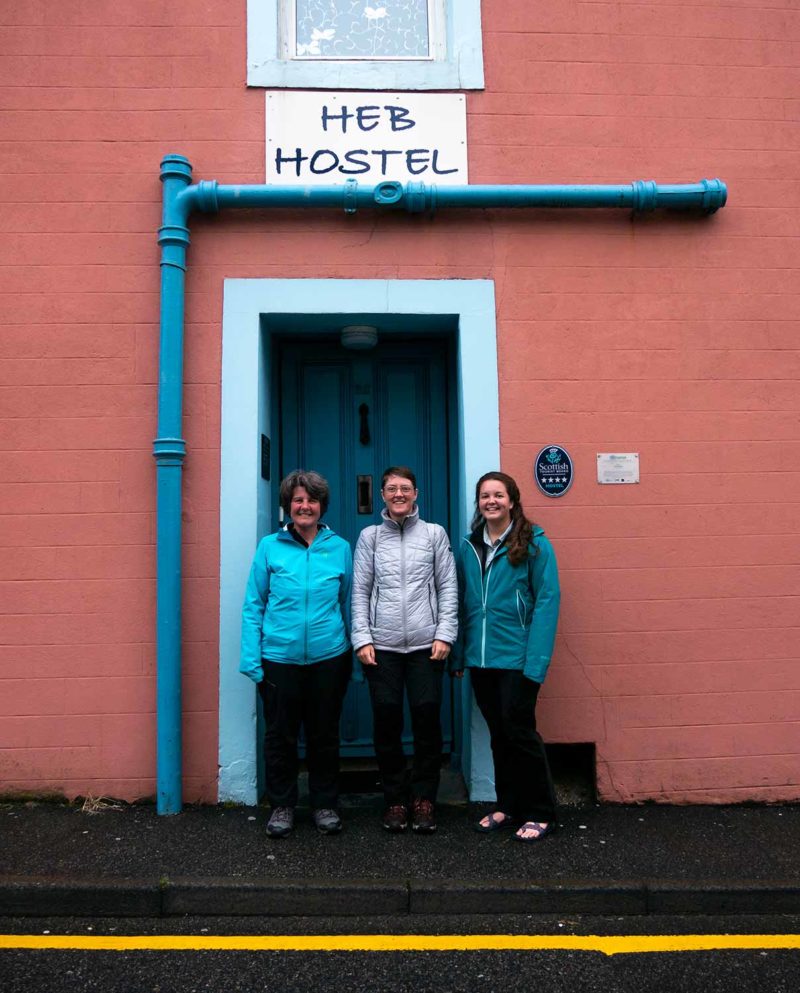
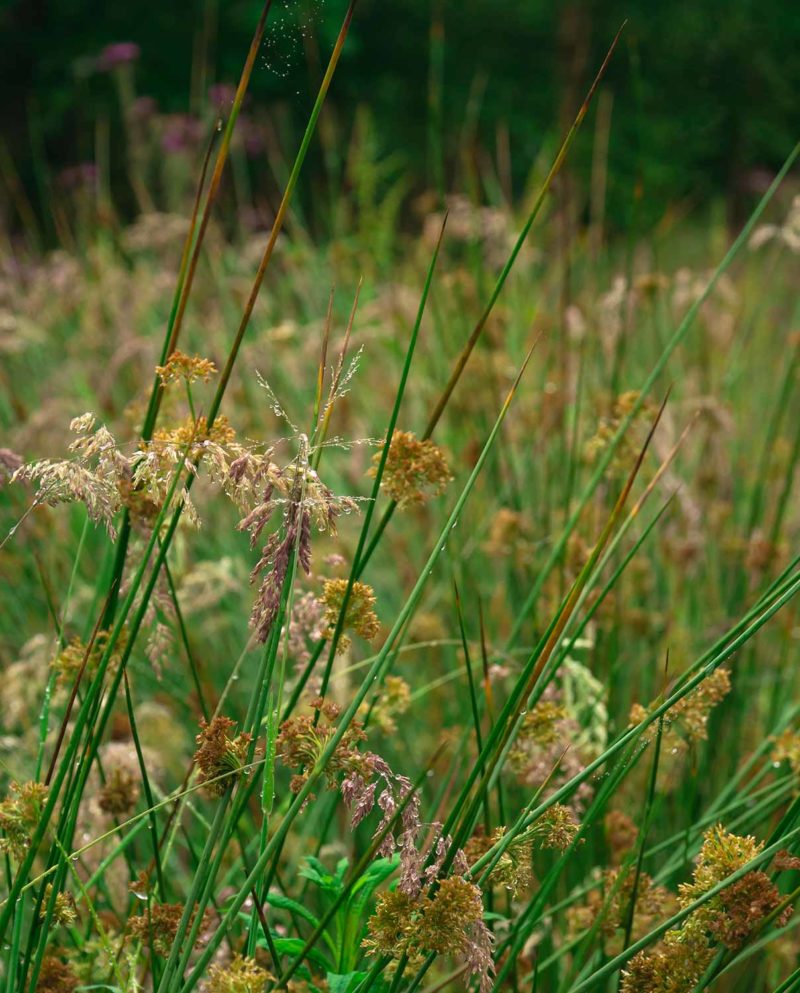
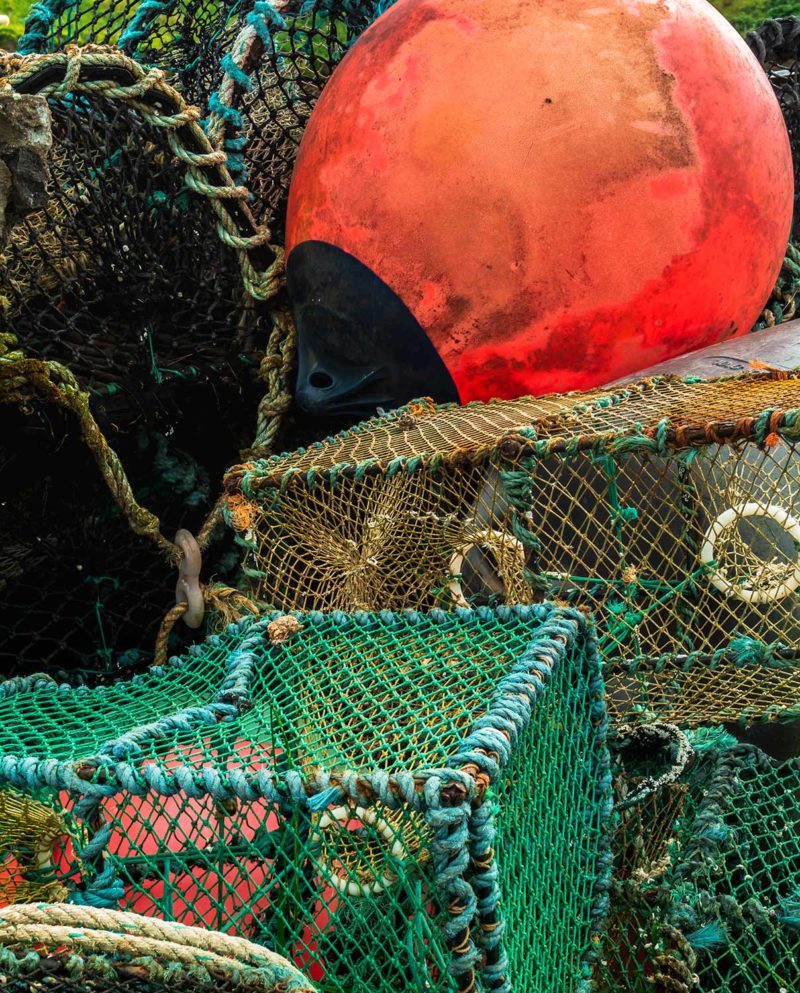
Marie, me and Julie in front of the hostel.
I leave Stornoway early in the morning after saying goodbye to Julie. She in taking the first ferry to Ullapool to return to the United States. Marie is having a sleep and is taking the ferry too but in the afternoon. She continues to the north of Scotland. I wished her a good trip last night. The bus takes me under drizzles to Eoropia from where a two-hours walk takes me to reach the Butt of Lewis. The end of the Hebrides. In French it would translate it by “the ass of Lewis”, Scottish humor I suppose. The hike runs along the Machair and the cliffs of the end of the Hebrides. Although not very tall, they are impressive and full of flowers. I arrive at the lighthouse where a mass of tourists is taking pictures. I continue my route.
I take the bus to return to Barvas where a second bus is supposed to take me to Arnol where a “blackhouse” (a traditional stone building with thatched roof) completely preserved is. But the bus makes a lot of detours and drops me late to Barvas. The other bus is already gone. I hitchhike to Callanish Stones, not having enough time to go to the Blackhouse. I must be at 2am at the small campsite in Callanish to pick up the keys to the hut I have reserved for tonight. Pam and Ursula, American and Swiss take me with them and ask me if I know Julie, the American with whom they made a tour two days ago. Decidedly, the Hebrides are not very big because we always end up meeting someone who knows someone! They drop me off at Carloway where I wait for another car to stop. An employee of the “Scottish Water” ends up stopping and I meet the most friendly gentleman!! Very nice and full of information, he tells me he was born on the island, that Gaelic is his first language (he has a very strong accent that I find very friendly) and takes me quickly see the remains of Dun Carloway, an old ford tower. Only half of the tower is left. The rest of the stones, he teaches me, was recovered by the inhabitants before to build their blackhouses! Another type of recycling, I suppose. We discuss all the way and I leave him with a good handshake.
In Callanish, I get the keys to my little hut by a lake. Only three “pods”, the place is super quiet. I have lunch at the Visitor Center cafe and go back in the other direction to Carloway to go for a walk to Garenin and visit a traditional Blackhouses village. The walk goes along a small peninsula following a small path. Arriving at the remains of an old deserted village, impossible to go further: a flock of sheep is “guarded” by a ram with big horns that will not let me continue. He approaches dangerously and stamps his foot. I retreat and instead of continuing on the coast, I cross, through the peat bogs, the peninsula from the inside. I finally recover the small trace on the other side and climb on a small hill to enjoy the view. I also discover the most beautiful place in Scotland for wild camping: flat, protected from the wind and dry! But surrounded by sheep a little aggressive. I do not know if it is the same breed, but I find the sheep of this peninsula much more aggressive than the others. I arrive at Garenin, the traditional village at the end of the day and the small museum is closed. Too bad, I would have liked to see the inside of a house. So instead I just enjoy their thatched roofs from outside. Return to Carloway with a perfect weather. The evening light bathes the landscapes with golden reflections. The places seem idyllic and the atmosphere so peaceful that I almost feel a twinge in my heart as I think about the fact of leaving the Hebrides tomorrow. Despite the rain and the difficulties, I really enjoyed my stay on the archipelago. A last hitchhike for the day brings me back to Callanish where I finally go up to see the famous circle of Callanish stones. There are not many people left and I can appreciate the magic of the place.
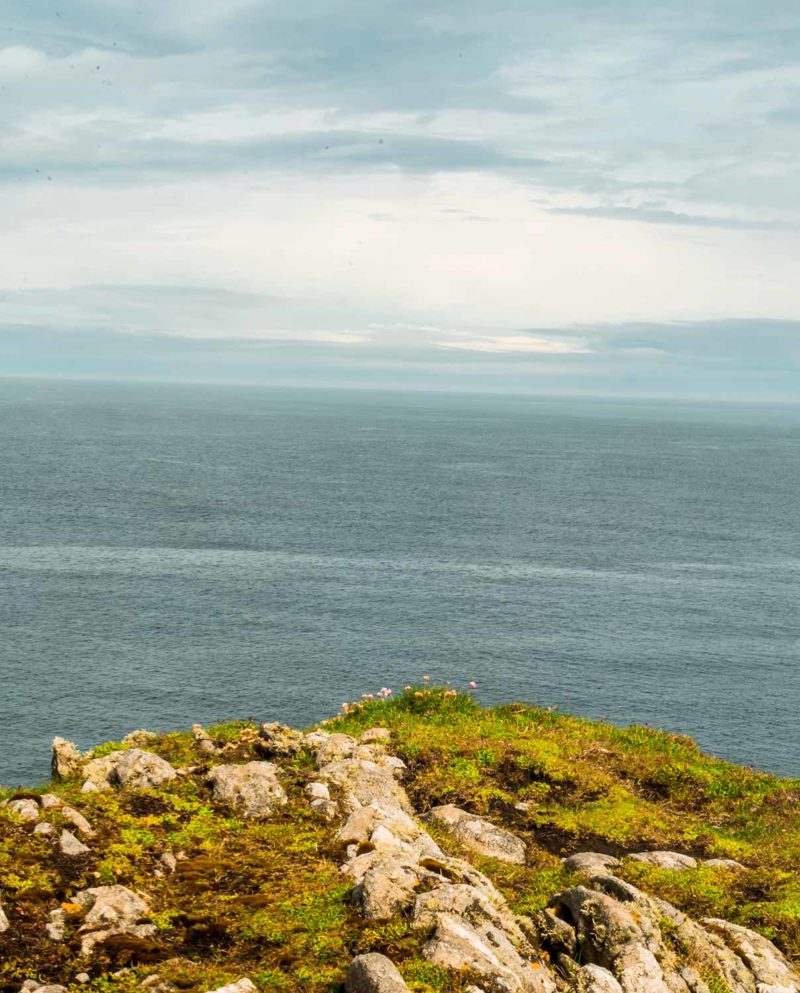

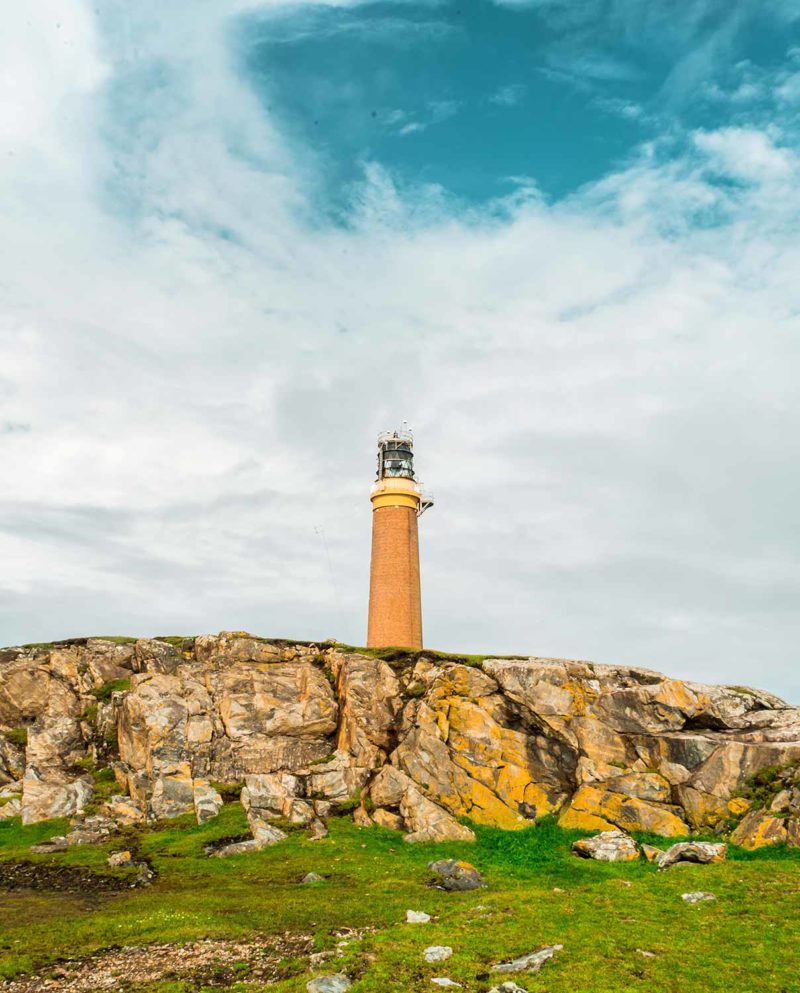
The Butt of Lewis, the end of the Hebrides.
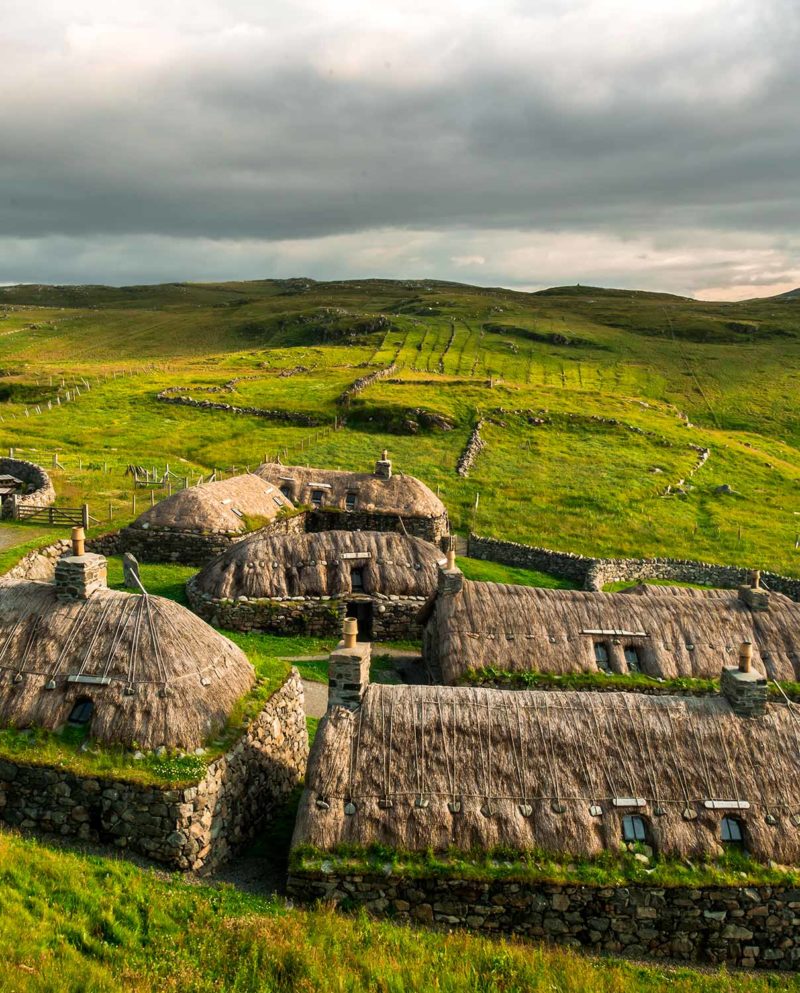
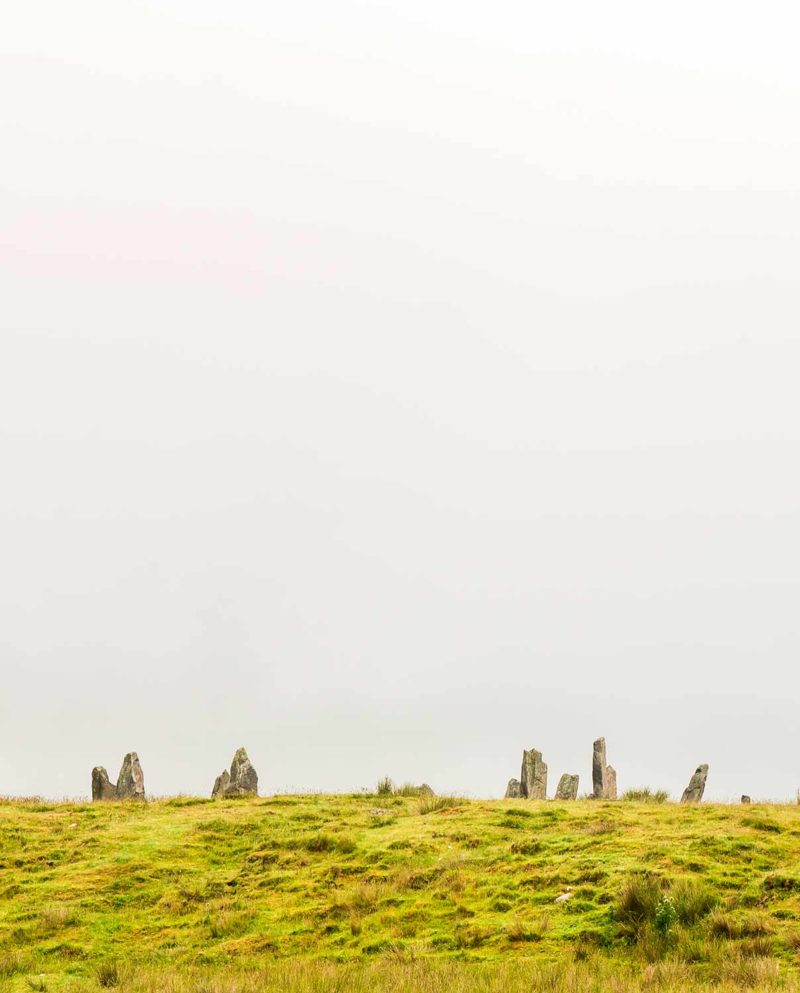
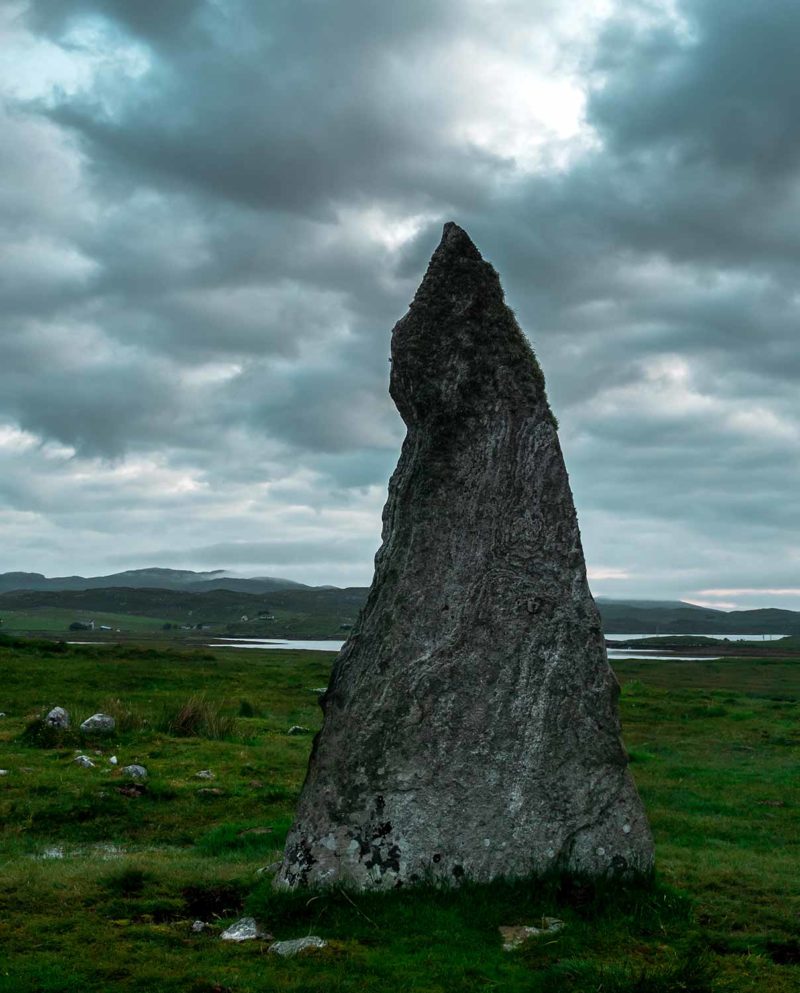
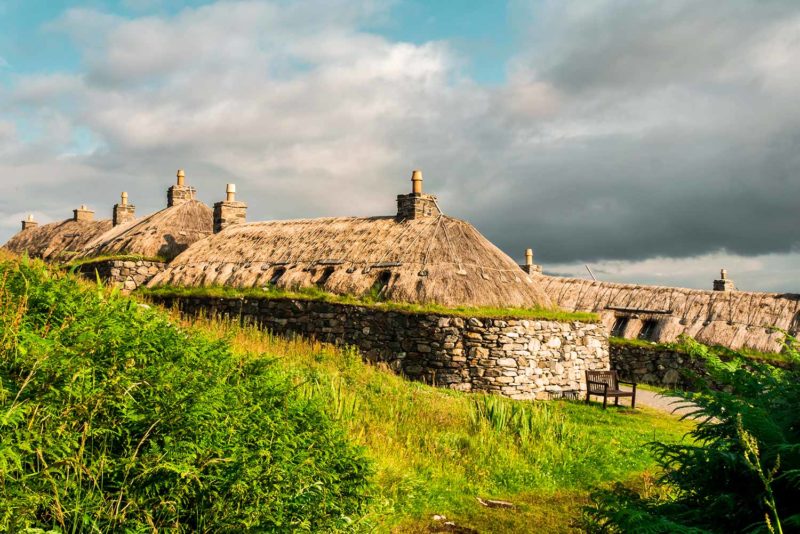
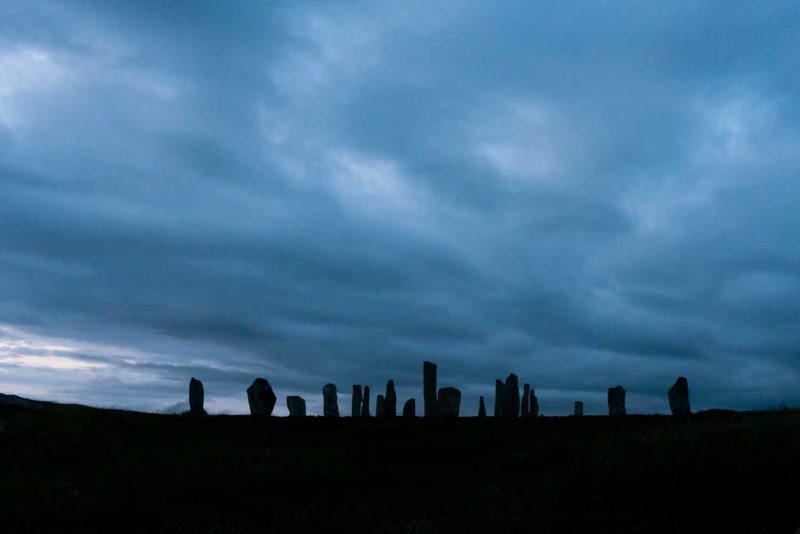
Gearrannan Blackhouse village on the left and Callanish Stones on the right.
I wake up at 5am, ready to go walk around the different circles of stones with the light of the beginning of the day. But it is raining. It is raining despite the weather announcing sun and clouds. Instead, it is fog and big droplets of water that greet me. Well, too bad. I go back to bed for a few hours. At 7am the weather is still the same. Okay then, it will be a quiet morning. I visit the small museum of the Visitor Center learning more about the stones. Megalithic site erected around 3000 BC, the place includes an arrangement of many stones in several circles a few kilometers away. Site I, the best known is also the largest with about fifty stones. It is difficult to know exactly what it meant even though the idea of a place of worship related to funerary rites seems to be the most obvious. I visit under the rain the two other smaller sites then returns to the big circle but the atmosphere has nothing to do with last night. It is full of tourists and the magic is gone.
In early afternoon, I leave the place to reach Tarbert where leaves the ferry to Skye. I take the bus to Leurbost and not wanting to wait one hour for the next bus, I hitchhike. An old Scottish couple (from the mainland) take me with them. They drop their cousin at the Youth Hostel in Rhenigidale where I did not have time to go a few days ago! I can discover the places and as described in the guide, they are superb. I see the path zigzagging the cliff sides and then the lunar hills. I hope I can come back one day. My drivers then drop me off at Tarbert where I leave the Hebrides under cloudy weather.
My second part on the Hebrides was full of discoveries. The three days of hiking through Harris are clearly the most beautiful of the way, at least for me, who prefers mountainous environments. Lewis, with its peaty hills similar to South and North Uist, was a bit less interesting. And I am glad I had the time to spend a few more days visiting the north of the island and sleeping next to the Callanish Stones. During these two and a half weeks of surveying these remote islands that are the Outer Hebrides, I met many people all more interesting than the others. May it be Marie, Julie, Venula, the dozen cyclists or the locals who took me hitchhiking, all where great encounters.
I greatly appreciated the peacefulness of the Hebrides. The pace of life is calm and relaxed. Despite some negative aspects along the hike, I greatly enjoyed my stay on the islands. They have a special charm that I already miss. I also learned many things about my ideas of walking. When I chose to go hiking this trail about a month ago, it was to discover the Hebrides but I also had in mind this kind of stupid desire to tell me that I was going to walk 250 kilometers. From point A to point B. Except that the interest of the trip is not there. What is important is the unexpected, the way we react to it and the meetings (with places and people). So here I am, I did not walked the entire Hebridean Way. I did not do a 250km trek. No. What I did was crossing the Hebrides mostly on foot. And that is fine like that.
« I love the wind here;
I just love all of it here,
Wind, rain and sun.»
Citation sur le mur du Musée Nan Eilean


Callanish Stones.
